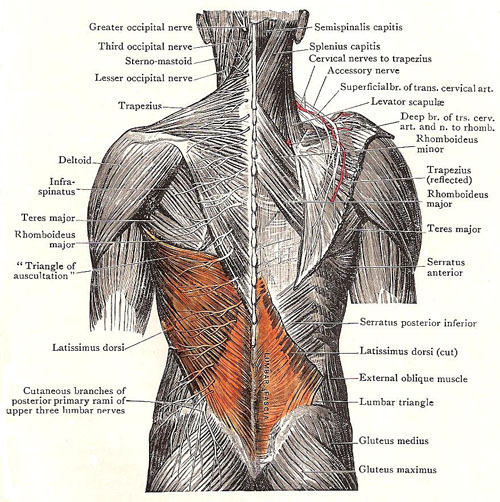latissimus dorsi

Superficial muscles of the back, including latissimus dorsi (orange).
The latissimus dorsi is a large, flat, triangular muscle which covers the back from the level of the sixth thoracic vertebra down to the iliac crest. The greater part of it is subcutaneous (beneath the skin); but its upper part, near the spines, is overlapped by the trapezius. The fibers of the latissimus dorsi arise from: (1) the tips of the lower six thoracic spines and the corresponding supraspinous ligaments; (2) the lumbar fascia; (3) the outer lip of the iliac crest, in front of the lumbar fascia; (4) from the lower three or four ribs; and (5) by a fleshy slip from the back of the inferior angle of the scapula.
Its fibers converge rapidly toward the lower part of the scapula; and it sweeps over the inferior angle in the form of a thick, fleshy band which winds round the lower margin of the teres major and terminates in a thin, narrow tendon, which is inserted chiefly into the floor of the bicipital groove of the humerus.
With the teres major, the latissimus dorsi forms the posterior fold of the axilla. At first it is placed behind the teres major, then it is folded round its lower border, and finally it is inserted in front of it. To the peculiar relationship of the two muscles is due the full, rounded appearance of the posterior axillary fold.
The latissimus dorsi is supplied by a special nerve (C. 6, 7, 8) from the posterior cord of the brachial plexus. It is an adductor, retractor, and medial rotator of the upper limb.


